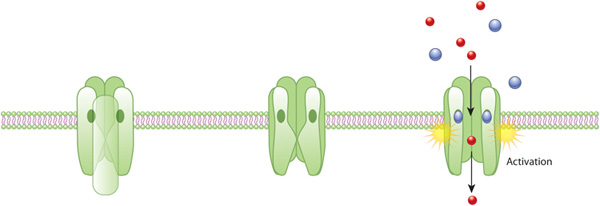- Home
-
Screening
- Ionic Screening Service
-
Ionic Screening Panel
- Ligand Gated Ion Channels
- Glycine Receptors
- 5-HT Receptors3
- Nicotinic Acetylcholine Receptors
- Ionotropic Glutamate-gated Receptors
- GABAa Receptors
- Cystic Fibrosis Transmembrane Conductance Regulators (CFTR)
- ATP gated P2X Channels
- Voltage-Gated Ion Channels
- Calcium Channels
- Chloride Channels
- Potassium Channels
- Sodium Channels
- ASICs
- TRP Channels
- Other Ion Channels
- Stable Cell Lines
- Cardiology
- Neurology
- Ophthalmology
-
Platform
-
Experiment Systems
- Xenopus Oocyte Screening Model
- Acute Isolated Cardiomyocytes
- Acute Dissociated Neurons
- Primary Cultured Neurons
- Cultured Neuronal Cell Lines
- iPSC-derived Cardiomyocytes/Neurons
- Acute/Cultured Organotypic Brain Slices
- Oxygen Glucose Deprivation Model
- 3D Cell Culture
- iPSC-derived Neurons
- Isolation and culture of neural stem/progenitor cells
- Animal Models
- Techinques
- Resource
- Equipment
-
Experiment Systems
- Order
- Careers
What Is Ion Channel?
Biophysicists found that greater electrical conductance was conferred by cell membrane's proteins when measuring the electric current passing through cell membranes, which are now called ion channels. Then a rich variety of channels has been isolated and analyzed from a wide range of cell membranes. Ion channels, proteins expressed by virtually all living cells that creates a pathway for charged ions from dissolved salts, including sodium, potassium, calcium, and chloride ions, to pass through the impermeant lipid cell membrane, are pore-forming membrane proteins that allow ions to pass through the channel pore. Their functions include establishing a resting membrane potential, shaping action potentials and other electrical signals by gating the flow of ions across the cell membrane, controlling the flow of ions across secretory and epithelial cells, and regulating cell volume. Ion channels are present in the membranes of all excitable cells. Ion channel receptors are usually multimeric proteins located in the plasma membrane. Each of these proteins arranges itself so that it forms a passageway or pore extending from one side of the membrane to the other. Excitable cells, including neurons, muscle cells, and touch receptor cells use ion channel receptors to convert chemical or mechanical messages into electrical signals.

Fig. 1 An example of ion channel activation(nature.com)
Ion channels are one of the two classes of ionophoric proteins, the other being ion transporters. They are integral membrane proteins, typically formed as assemblies of several individual proteins. Such "multi-subunit" assemblies usually involve a circular arrangement of identical or homologous proteins closely packed around a water-filled pore through the plane of the membrane or lipid bilayer. Most ion channels are gated which means they open and close either spontaneously or in response to a specific stimulus, such as voltage-gated ion channel, ligand-gated ion channel and other gating channels. The gating of channels with a capacity for ion transport is the basis of the many nerve-nerve, nerve-muscle, and nerve-gland interactions underlying neurobiological behaviour. In excitable cells, voltage-gated channels that allow transient influx of positive ions (e.g., sodium, patassium and calcium ions) underlie brief depolarizations of the membrane known as action potentials. Action potentials can be transmitted rapidly over long distances, allowing for coordination and precise timing of physiological outputs. Action potentials trigger downstream physiological effects almost in all cases, such as secretion or muscle contraction, by opening voltage-gated calcium-selective ion channels and elevating intracellular calcium concentration.
Ongoing basic research on ion channels seeks to understand the structural basis for permeability, ion selectivity, and gating at the molecular level. Research efforts also attempt to answer questions about the cellular regulation of ion channel protein synthesis and about the subcellular distribution and ultimate degradation of channels. Besides, ion channels are not only significant drug targets, but they are also critical for evaluating drug safety.
Creative Bioarray has fully-validated ion channel cell lines for use in cell-based functional assays including manual and automated patch clamp in fluorescent and luminescent platforms. Researchers can obtain an accurate assessment of compound selectivity and safety pharmacology. Scientists from Creative Bioarray have applied cell-based assays to identify pharmacochaperone compounds for cystic fibrosis and cardiac arrhythmias. Monitor CFTR and hERG receptor trafficking to the membrane based on our cutting-edge electrophysiological screening platform, without the need for antibodies or imaging. Contact us now if you would like to get further information about our general capabilities or have any specific inquiry.
References
- Hille B (2001) [1984]. Ion Channels of Excitable Membranes (3rd ed.). Sunderland, Mass: Sinauer Associates, Inc. p. 5.
- Purves D, Augustine GJ, Fitzpatrick D, Katz LC, LaMantia A, McNamara JO, Williams SM, eds. (2001). "Chapter 4: Channels and Transporters". Neuroscience (2nd ed.). Sinauer Associates Inc.
- Hille B, Catterall WA (1999). "Chapter 6: Electrical Excitability and Ion Channels". In Siegel GJ, Agranoff BW, Albers RW, Fisher SK, Uhler MD (eds.). Basic neurochemistry: molecular, cellular, and medical aspects. Philadelphia: Lippincott-Raven.
Related Section
Inquiry

